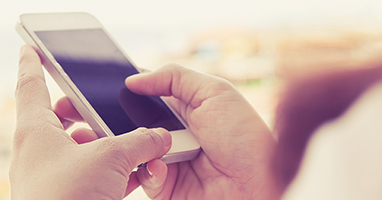Marisol, a home care nurse, is visiting Jack, a client who lives alone and has difficulty managing his self-care. Jack is due to have a dressing change for a stage II skin ulcer on his right arm.

Rolling up Jack's sleeve to examine the ulcer, Marisol notes that there is purulent discharge. She suggests to Jack that he should visit his local clinic and have a nurse practitioner (NP) examine the wound. Jack declines and states getting to the clinic would be difficult with his poor health.
Marisol makes a decision
Marisol is concerned about follow-up care as she will be away for the next few weeks. Marisol takes a photo of the wound with her personal phone. She emails the photo and a description of the care provided to the clinic's NP.
What did you think of Marisol's actions?
Was it appropriate for Marisol to take a photo of Jack's wound?
Did Marisol have Jack's consent to take the photo?
Was it appropriate to send the photo to the NP even though Jack had declined Marisol's recommendation to visit the NP?
How would you respond if Marisol asked you what you thought?
Marisol didn’t explain to Jack why the photo was needed and didn’t get Jack's consent to take it or to share it with colleagues. Nurses ensure clients (or substitute decision-makers) consent to the collection, use, and disclosure of their personal and health information.
While Marisol had good intentions, she breached Jack's privacy and the Professional Standards (and the RPN Code of Ethics if applicable) by taking a photo and sharing it without consent. Marisol may have also violated the Freedom of Information and Protection of Privacy Act by allowing personal information of a client to be stored outside of Canada.
What is obtaining consent?
Consent is valid only if clients understand fully how their personal health information is to be collected, used, or disclosed. This information must be presented to the client before consent is requested.
The
Health Care (Consent) and Care Facility (Admission) Act sets out some criteria for valid informed consent to healthcare. An adult is considered to have consented when:
The consent relates to the proposed healthcare
The consent is given voluntarily
The consent is not obtained by fraud or misrepresentation
The adult is capable of making a decision about whether to give of refuse consent
The healthcare provider gives the adult the information a reasonable person would require to understand the proposed healthcare and to make a decision:
The condition for which the healthcare is proposed
The nature of the proposed healthcare
The risks and benefits of the proposed healthcare that a reasonable person would expect to be told about
Alternative courses of healthcare, and
The adult has an opportunity to ask questions and receive answers about the healthcare
Express consent is written or spoken permission directly communicated to the healthcare provider about proposed actions. Express consent demonstrates to the healthcare provider that the client understands what is being proposed. Signing papers or verbal communication such as saying, "Yes, I consent" are examples of express consent.
Implied consent assumes permission is given based on a client's behaviour/actions and the circumstances of a particular situation, rather than on their direct written or spoken agreement (e.g., client rolls up sleeve when nurse reaches for blood pressure cuff or is silent to a proposed action). Implied consent is not shown by a client's non-action (e.g., not moving their arm away) but from active participation (e.g., offers their arm to support the nurse completing a diagnostic test).
Nurses recognize that consent may be given verbally, in writing, through an alternative communication system (e.g., computer assisted), or through behaviour that implies consent. To reduce the risk of misinterpretation of consent, nurses should seek verbal affirmation prior to nursing care.
Mobile devices and client health information
Marisol also likely breached her workplace’s policy by using a personal device to store and share client information. As mobile devices themselves store and retain data (often outside of Canada), there is the potential for unauthorized disclosure of clients' personal health information. Without correct encryption, any emails, voicemails, texts, photos, or audio on portable devices (including memory sticks) could be inappropriately accessed or disclosed if the device is lost, stolen, or viewed. Follow your workplace’s policies for mobile devices and client health information or speak to your privacy officer.
If your workplace does not have a policy regarding the use of mobile devices, discuss the situation with your colleagues and manager to advocate for resources and policies related to the use of technology that could improve client care.
What could Marisol have done differently?
While Marisol's intention was to support continuity of care for Jack, standards related to privacy & confidentiality and consent, her nursing designation's Professional Standards (RPN Code of Ethics if applicable), and agency policies and legal processes need to be followed. Marisol would meet standards by:
Obtaining Jack's consent to have his wound photographed and to share the photo with colleagues and the clinic NP.
Documenting that Jack's consent was received.
Following the Privacy & Confidentiality and Consent practice standards and workplace policies for client consent related to taking and sharing personal health information with other healthcare professionals.
Following workplace policies related to use of personal devices and texting or emailing client information.